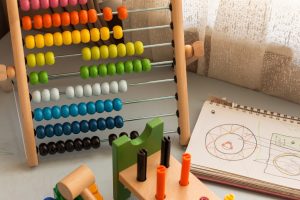Learning Spaces: Modern Classrooms
The traditional classroom setup with rows of desks, a chalkboard, and a teacher at the front of the room has long been the norm for schools around the world. However, with the increasing use of technology and new pedagogical approaches, the concept of a “modern classroom” has emerged. Learning spaces, the physical environments where education takes place, have evolved to better meet the needs of students and teachers in the 21st century. In this article, we will explore the characteristics of modern classrooms and how they are contributing to the transformation of education.
The Evolution of Learning Spaces
Classrooms have come a long way since the one-room schoolhouses of the past. As education has evolved, so have the physical spaces where it takes place. In the early 20th century, classrooms were designed with a “factory model” in mind, where students were expected to sit quietly, listen to the teacher, and complete the same tasks at the same time. However, as we entered the digital age, the traditional classroom started to feel outdated and restrictive.
Today’s modern classrooms are designed with the understanding that each student learns differently and at their own pace. They are dynamic spaces that encourage collaboration, critical thinking, and creativity. These classrooms are not just places to learn, but also places to explore, experiment, and engage.
The Characteristics of Modern Classrooms
So what sets a modern classroom apart from a traditional one? Let’s take a look at some key characteristics:
Flexible and adaptable
Gone are the days of rigid rows of desks facing the front of the classroom. Instead, modern classrooms are designed with flexibility in mind. This means having furniture that can be easily moved and rearranged to suit different learning activities. For example, one day the desks may be arranged in a circle for a group discussion, and the next day they may be pushed to the side to create open space for a hands-on project.
Technology-integrated
In today’s digital age, technology is an essential tool for learning. Modern classrooms are equipped with the latest devices, such as laptops and tablets, to facilitate research, collaboration, and creativity. Interactive whiteboards and projectors are also commonly used to enhance the learning experience and make lessons more engaging.
Collaborative learning spaces
The days of individual desks and quiet study are over. Collaboration is a key component of modern classrooms, and the physical space should reflect that. This means having areas for group work, such as tables or couches, where students can come together to discuss and share ideas. These collaborative spaces foster teamwork, communication, and problem-solving skills.
Comfortable and inviting
Gone are the days of hard, uncomfortable chairs and dreary classrooms. Today’s modern classrooms are designed to be warm and inviting, making students feel comfortable and at ease. This can include comfortable seating, natural lighting, and even plants or artwork to add a touch of beauty to the space. Studies have shown that comfortable and inviting learning spaces can improve student engagement and learning outcomes.
Student-centered
Perhaps one of the most significant differences between traditional and modern classrooms is the shift towards student-centered learning. Instead of the teacher being the sole authority figure, modern classrooms put the focus on the student. This means creating a space that encourages exploration, self-directed learning, and student autonomy.
The Impact of Modern Classrooms on Education
The shift towards modern classrooms has had a significant impact on education. By creating learning environments that better suit the needs of students, we are seeing improved learning outcomes and increased student engagement. Students are more motivated to learn, and teachers are seeing a higher level of creativity and critical thinking in their students.
Furthermore, modern classrooms also prepare students for the realities of the modern workforce. In today’s globalized and digital world, collaborative and innovative skills are in high demand, and modern classrooms help students develop these skills from an early age.
In Conclusion
Learning spaces, or modern classrooms, are a reflection of the changing landscape of education. They are designed to foster collaboration, critical thinking, and creativity, and are equipped with the latest technology to support learning. By creating welcoming and student-centered environments, modern classrooms are transforming education and preparing students for the challenges and opportunities of the 21st century.










